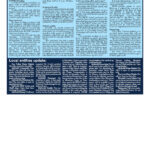Editor:
Olympics. I have been enjoying the games and the excitement and am amazed at how close winning a run or a slide or any one of the events can be. And I think of Lauren Salter who is an Olympic hopeful right here in our midst. She’s one of us, a home-town girl and she’s wanting to qualify for the next winter Olympics but she needs our help.
Her needs are many: a new sled, runners for her sled, helmets and spikes, and speedsuits and money for use of practice runs and air travel to events.
Oh, and she needs to eat and a place to live. We, as a community, have helped our locals in the past with many different endeavors and dreams, and I appeal to your generosity now to help Lauren realize her dream of being an Olympian in 2018.
Most people watching the Olympic Games on TV don’t realize that only .000000421429577-percent of the world’s population is a Sochi Olympian.
It is incredibly difficult to make an Olympic team, and those athletes make it look far easier than it is. But that’s the point: These are the best athletes in the world. Even to be what Lauren is, an Olympic Development hopeful, is incredibly unusual.
It’s also incredibly expensive. The USA Bobsled and Skeleton team estimates that an elite athlete like Lauren should budget more than $40,000 annually to run with the world’s best. There is zero support from the government or from the team, so these young athletes have two full-time jobs, but with a difference — one of those jobs sucks up all of the money earned from the other, and a lot more.
An Olympic team isn’t made in a year, two years or three years. It’s made over a long period of time. The average level of experience on the USA’s skeleton team is about 12 years. Over that time, a skeleton athlete — or slider, as they call themselves (that’s our Lauren) — may go through four or five custom-built sleds at a minimum cast of $8,500 each; countless runners at more than $800 per set; any number of $400 helmets and spikes; and several speedsuits each running to $700.
What’s more, she has to pay about $30 out-of-pocket for each of the hundreds of practice runs taken over that time and pay to fly to competitions around the world (including an extra $150 baggage charge for the sled).
No corporate sponsorships exist outside the six or seven household names in figure skating or downhill skiing. Everyone else you are watching on TV relies on family, friends, hometown neighbors and businesses, and those exceedingly rare angels who sometimes drop three- and four-figure checks from the skies. Even gold medal winners are in debt and have sometimes had to rely on food stamps.
That one of our own has the chance to be among the best in the world at something — at anything — is a thrilling thought, and we should all try to do something to help out. Every donation is valuable but it’s an ongoing need.
The next Olympics are four years away. I see some local names on her sponsor list. Perhaps a few more of our local businesses and individuals could subscribe a monthly donation, or maybe someone knows someone at a corporation who wants to take a chance on an Olympic hopeful. Or maybe there are some more angels in our hometown.
Lauren can be contacted (and donations can be made) through her website — dashofsalter.com. I know our town can make itself proud by continuing to support Lauren in her quest for an Olympic gold medal.
Iva Botton
Idyllwild










